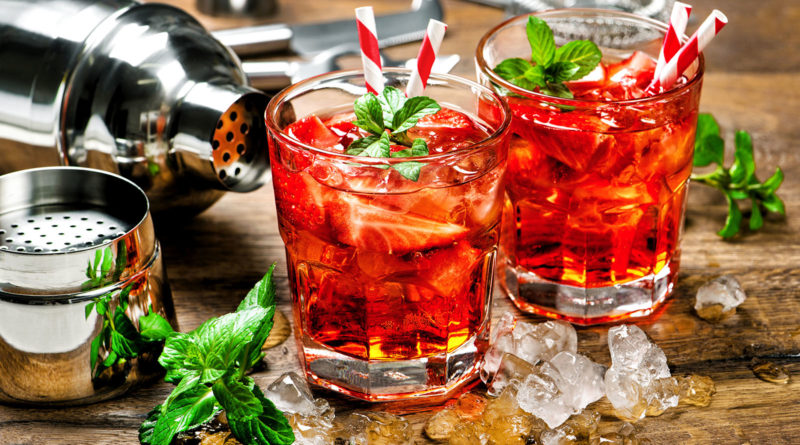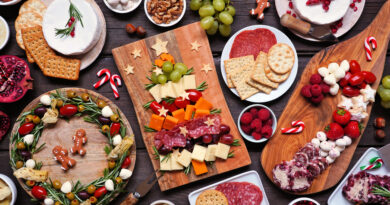Sip smart during the holidays
Fall ushers in the holiday season and oftentimes signals the beginning of family gatherings, celebrations, office parties and social events with friends — complete with the cycle of never-ending eating and drinking. Many times this celebratory season, cocktails and fall-based lagers are on the menu, while on other occasions an alcoholic beverage might be consumed due to the stress of the holidays. When it comes to alcohol consumption, it is vital to make mindful choices to maintain your health for the next few months and beyond.
A few definitions
According to the “Dietary Guidelines for Americans 2020-2025” from the U.S. Department of Health and Human Services and U.S. Department of Agriculture, adults of legal drinking age can choose not to drink or to drink in moderation. Moderation is defined as limiting intake to two drinks or less in a day for men and one drink or less in a day for women.
On the other side of the spectrum, the National Institute on Alcohol Abuse and Alcoholism defines “binge drinking” as five or more drinks in men and four or more drinks for women in about two hours. Binge drinking is noted to bring the blood alcohol concentration to 0.08% (grams of alcohol per deciliter) or higher.
Heavy alcohol use, as categorized by the NIAAA is for men, consuming four drinks on any given day or more than 14 drinks per week. For women, the amount is three drinks a day or more than seven drinks per week. Both binge drinking and heavy drinking can lead to severe alcohol abuse and even alcoholism.
Who should avoid alcohol
Most of us know this, but it bears repeating. People who plan on driving or operating machinery, which requires focus, alertness and coordination, should not drink. Certain medications can also interact with alcohol (both over the counter and prescription drugs) as well as medical conditions, including pregnancy. Recovering alcoholics or those who have issues with impulse control (especially related to alcohol) should also steer clear of holiday cocktails.
Health impacts
Men and women differ drastically in alcohol absorption rate, metabolism as well as long term health implications. After drinking the same amount of alcohol (all other controls relatively the same), women typically have higher blood alcohol levels than men; in addition, due to the higher absorption rate, the effects of alcohol occur more quickly in females and last longer.
According to the CDC, “excessive alcohol use is a risk to women’s health.” Women are more susceptible to liver disease such as cirrhosis as well as at an increased risk for breast cancer. In women, cognitive decline and brain shrinkage occur at a faster rate than for men and studies show an increased risk for heart muscle damage with lower amounts of alcohol consumption versus men. While women appear to be at a greater risk for health complications due to excessive alcohol consumption, both genders ultimately can suffer from weight gain, liver disorders, certain cancers, high blood pressure, stroke and heart rhythm disturbances.
For people with diabetes, sugar-laden alcoholic beverages can increase blood sugar levels as well as hemoglobin A1C lab values over time.
Sugary mixers, cream-based drinks and flavored malt beverages contain high levels of sugar versus other alcoholic beverages and should be substituted or avoided to maintain a healthy blood sugar (and weight).
By using low-calorie mixers, such as no-calorie soda or tonic water with lemon/ lime wedges, you can help reduce added calories and sugar. Making “healthier” ingredient swaps in your cocktails can also beneficial and still provide flavor; for example, try using low-fat milk in eggnog and reduce the amount of cream.
Sipping suggestions
Rarely does an all-or-nothing approach work as there are ways to enjoy holiday alcoholic drinks in moderation. Devise a plan before an event that involves cocktails. For example, limit yourself to a couple of your favorite drinks and focusing on chatting with family and friends. Savor your drinks and sip them slowly, engaging in conversation to turn the focus off the beverages and onto the reason for the gathering.
Try drinking water between each alcoholic beverage. This is guaranteed to slow down your drinking speed and keeps you hydrated in the process. Grab a glass of sparkling water and squeeze in a lime; no one will know you are taking a much needed water break. If you choose to avoid alcohol altogether, holding a mocktail can appear as if you are enjoying the holiday party complete with a beverage in hand! Other ideas for drinks include non-alcoholic beer and wine, diet soda or club soda with a lime and mocktails (watch the calories). Coffee and tea, depending on the time of day, can also be delicious alternatives.
The holiday season often comes the plethora of celebratory food and drinks. Whether you choose to engage in alcohol abstinence or moderation, you can maintain good health and start the new year off right.
Carey Stites is a registered and licensed dietitian located in Harker Heights. She obtained a master’s degree in nutrition and dietetics from Texas Tech University has been a practicing dietitian since 2001. Carey is also an AFAA certified group fitness instructor and personal trainer; she has promoted health and wellness through presentations, classes, writing and cooking demonstrations all over Texas.




